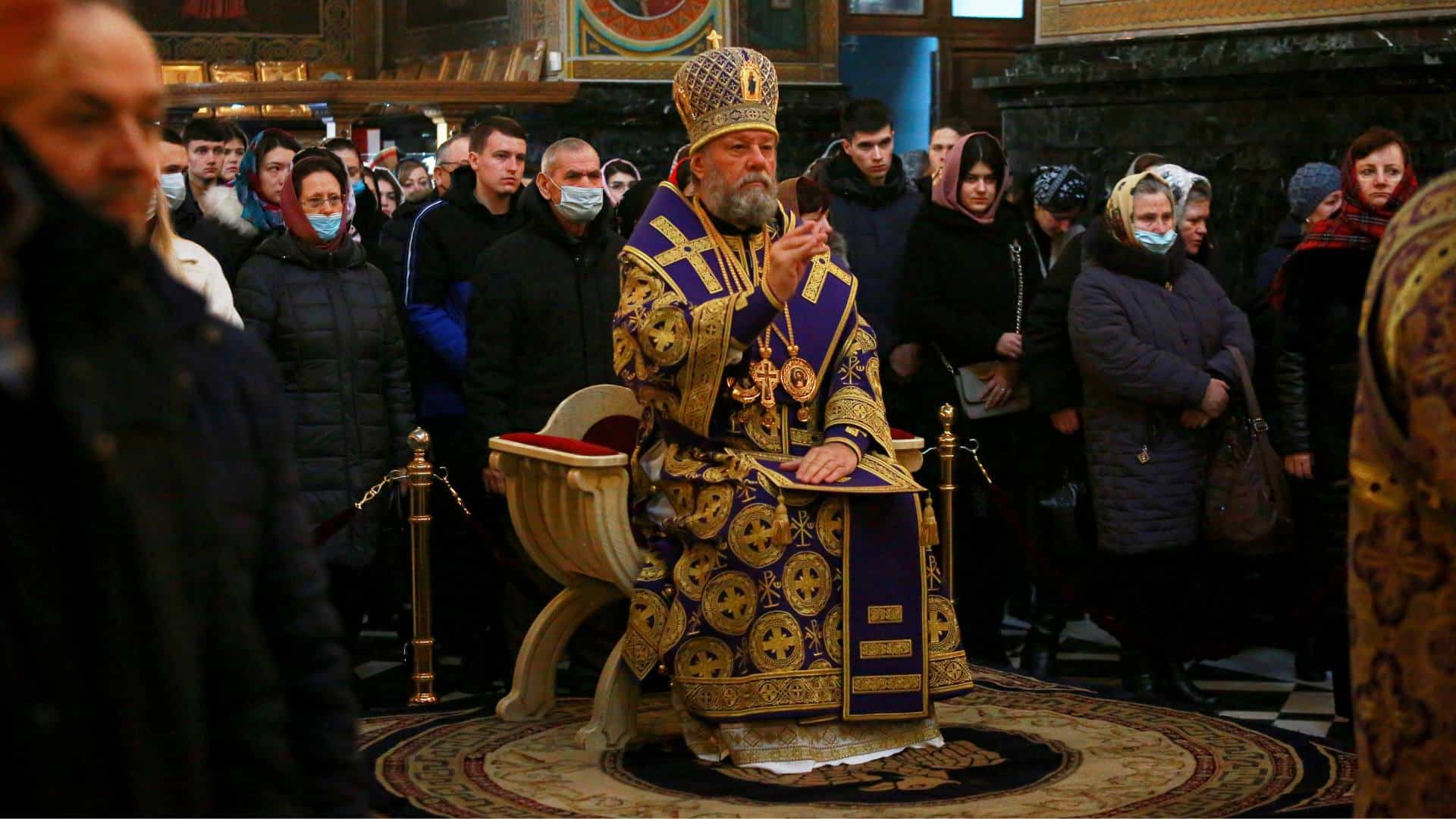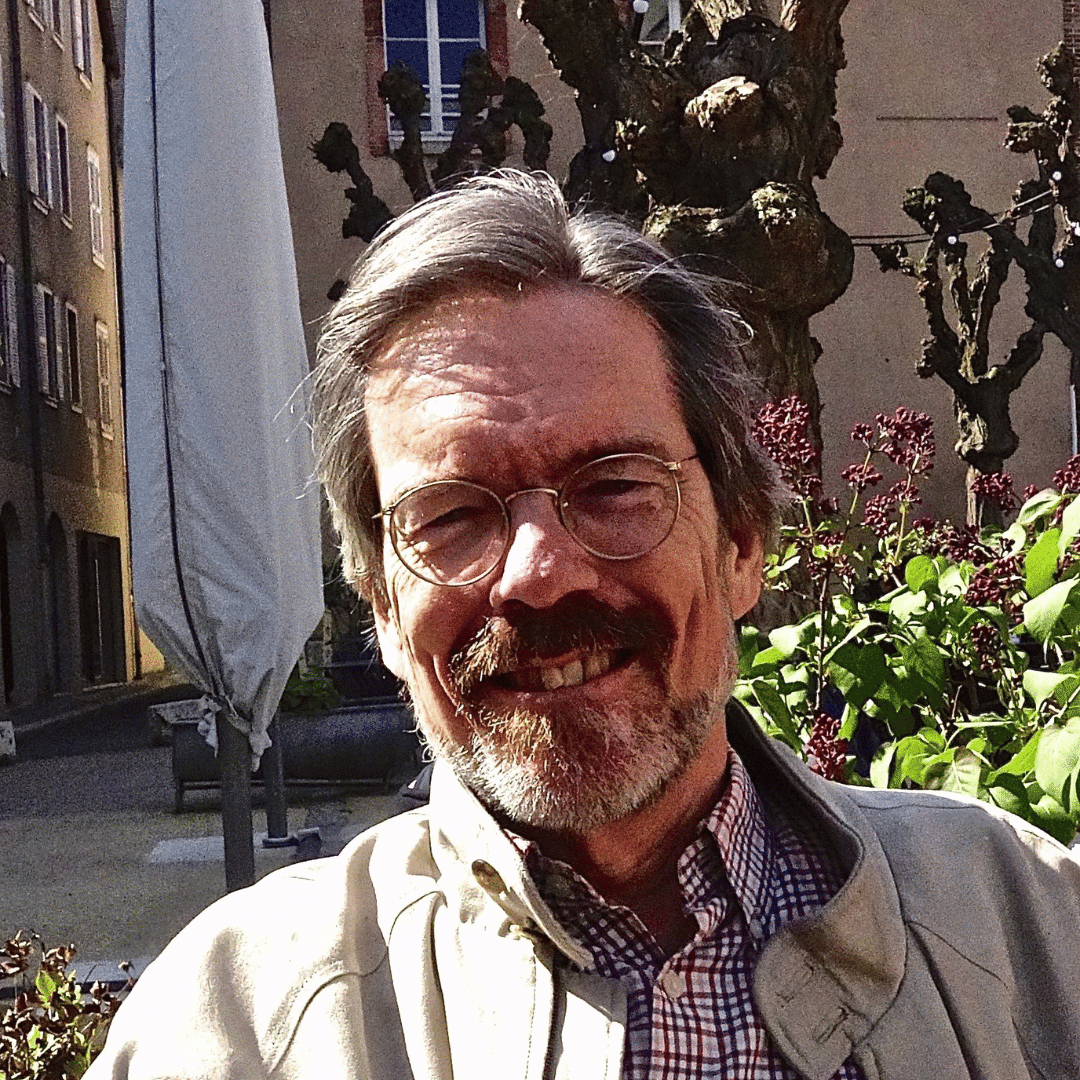In parts of Eastern Europe there is little separation between church and state. But what happens when the church becomes an instrument of a different nation?

The head of the Moldovan Orthodox Church, Metropolitan Vladimir holds a religious service in Chisinau, Moldova, in March 2022. Russia has been accused of using the church and its priests to sway voters in Moldova’s parliamentary elections 28 September 2025. (AP Photo/Aurel Obreja)
Editor’s note: Voters in Moldova, a country that borders Ukraine and is in formal talks to join the European Union, went to the polls 28 September to vote for their representatives in parliament. In the lead up to the election, a number of news organizations have reported on attempts by the Russian government to sway voters there. The Reuters international news agency, in particular, published an investigative story into payments and gifts made by the Russian government to priests in the Moldova Orthodox Church.
To help put into context the connection and strife between politics and religion in the region, we republish a story by correspondent Tom Heneghan, originally published January 2023, that explores the connection between religion and politics in Ukraine and how this connects with Ukrainian nationalism and the war with Russia. We launched Decoder Replay to help readers better understand current world events by seeing how our correspondents decoded similar events in the past.
Ukrainian President Volodymyr Zelensky says religion was one topic his family never mentioned at the dinner table.
That could be because he’s from the Jewish minority, or because the overwhelming Orthodox Christian majority was split into different branches.
Ukraine’s Orthodox have gradually become more Ukrainian, to the detriment of a once-powerful pro-Russian Church, and the trend has sped up now that Kyiv and Moscow are at war.
The conflict between the pro-Kyiv Orthodox Church of Ukraine (OCU) and the pro-Moscow Ukrainian Orthodox Church (UOC) gets lost in the international coverage of the drama on the battlefield.
But with about 80% of Ukrainians identifying as Orthodox Christians, even if probably less than half attend church regularly, this split between the two Churches seeps into politics.
Christmas in Kyiv
The religious conflict crept into the news last month when the pro-Kyiv Church authorized all Ukrainian parishes to celebrate Christmas on December 25 if they wished, rather than the traditional Orthodox date of January 7.
The symbolism of allowing Christmas to be celebrated on the date used in the West was not lost on Ukrainian believers.
The roots to this clash go back to the communist period. While Ukraine was part of the Soviet Union, it was under the umbrella of the Russian Orthodox Church.
When the Soviet Union collapsed in 1991, the Ukrainian Orthodox Church continued to operate in the newly sovereign Ukraine, but proclaimed its loyalty to the Moscow Patriarchate.
Ukrainian patriots objected and said they deserved their own Church. Their rival Orthodox Church of Ukraine was created in 1992, soon after Ukraine’s independence. It was recognized as autocephalous (independent) by the Ecumenical Patriarchate in Istanbul — the highest authority in Orthodox Christianity — in 2019.
The politics of praying in Ukrainian
The two Churches have the same theology, liturgy and even architecture as the Moscow Church. But the Kyiv Church prays in Ukrainian rather than Church Slavonic and declares allegiance to Ecumenical Patriarch Bartholomew in Istanbul instead of Moscow’s Patriarch Kirill.
Originally much larger, the Moscow Church saw parishes defecting to its rival, especially after the war began. Under this pressure, the Ukrainian branch declared its independence from Russia in May, condemned the invasion and refused to recognize Patriarch Kirill in its liturgies.
It’s unclear now which Church is larger. But the head of the Kyiv Patriarchate, Metropolitan Epiphinius, told Religion News Service in May: “Every day, Ukrainians are gradually coming to understand which Church is truly Ukrainian and which Church is Russian.”
The Moscow Patriarchate tried to shield off Russian-occupied Crimea by creating its own metropolitanate (archdiocese) there in June. The Kyiv Church refused to recognize this.
When Putin annexed four Ukrainian territories in September — even though he did not completely control them — he tried to justify the move in religious terms, calling it a “glorious spiritual choice.”
Sermons, spies and the Security Service
But Kyiv increasingly saw the pro-Moscow Church as a fifth column, or spies of Putin. In October, the acting head of Ukraine’s Security Service revealed it had found 33 suspected Russian agents among the Moscow Church’s clergy in Ukraine.
Some preached pro-Russian sermons, Kyiv said, some had anti-Ukrainian literature and some were army chaplains who passed on information about Ukrainian artillery batteries to Russian agents.
That’s when the Kyiv Church authorized all Ukrainian parishes to celebrate Christmas on December 25 if they wished. On December 1, Zelensky upped the ante by calling for an official ban on all activities of the Moscow Patriarchate’s Church in Ukraine. Parliament was asked to draft a suitable law, which may be difficult given the provision in the Ukrainian constitution of freedom of religion.
In late December, Ukraine refused to renew the Moscow Church’s lease on the Cathedral of the Dormition at Kyiv’s Monastery of the Caves, traditionally the center of Ukrainian Orthodoxy.
On January 7, Metropolitan Epiphanius, head of the pro-Kyiv Church, celebrated the traditional Christmas there to show he was the new man in charge now.
And in its latest turn to faith, Russia called for a 36-hour truce to mark the traditional Christmas on January 7. Kyiv and its western allies rejected this as a cynical ploy, and both sides continued shelling each other as if nothing had happened.
The battlefield struggle is still the main story, both in its ultimate importance and in the David-and-Goliath story that readers understand. The religious rivalry will always be secondary.
But these pinpricks on the faith front add up to a new phase in the growth of local nationalism, which helps buoy Ukrainian morale. In hoping to defeat a country he thought would easily give in, Putin has done more than anyone to forge a united and defiant Ukrainian nation.
Three questions to consider:
1. Why do politicians often appeal to religion during a war?
2. Do mainstream journalists make religious angles clear in a conflict?
3. When do separate small events add up to a noteworthy trend?

Tom Heneghan was a correspondent, bureau chief, regional news editor and global religion editor during his 40 years at Reuters, with postings in Vienna, Geneva, Islamabad, Bangkok, Hong Kong, Bonn and Paris. He covered the Soviet-Afghan war, two papal elections and Germany’s reunification, which he analyzed in his book “Unchained Eagle: Germany After The Wall”. Based in Paris, he now writes regularly for The Tablet in London and Religion News Service in Washington.

It is an interesting point of view. I certainly believe the religious questions should be considering during an analysis about importance events in our society. And a war is a big event.
We need to say that it is not uncommon use religions questions in wars. Rulers use this subject to raise awareness, to convince and to mobilize people. It easier manipulate people when they are sensible.